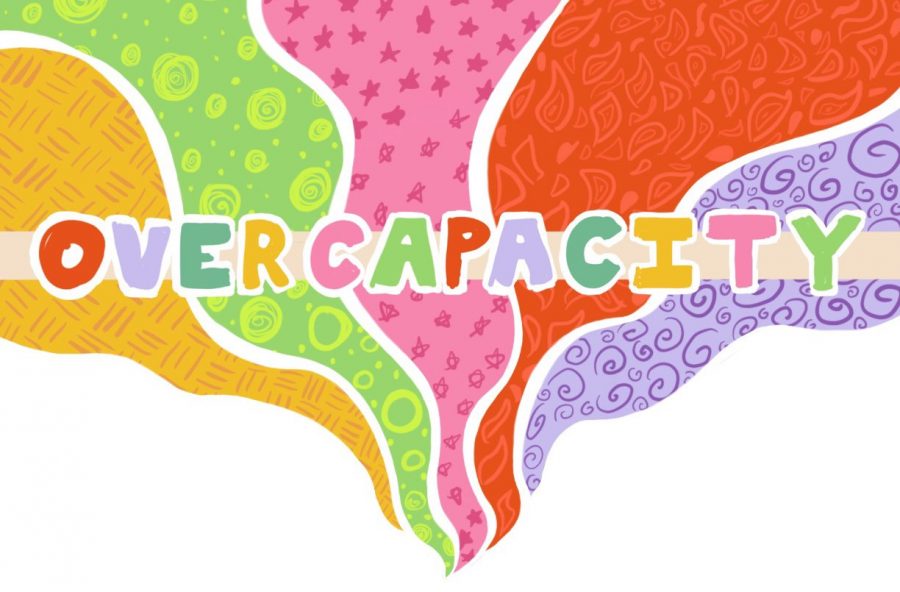Editorial: Overcapacity
The WSS Editorial Board expresses its disapproval of the newly enacted Senate File 160 and encourages students to combat the state’s recklessness with increased personal safety measures.
On Jan. 29, Gov. Kim Reynolds signed Senate File 160 into law, forcing school districts across the state to offer a 100% on-site schooling option starting Feb. 15. For the state to suspend the in-person option, the Board of Education must waive the requirement, or Reynolds must declare a Public Health Disaster. If a district fails to follow the order, the state will not recognize its total instructional time requirements and push summer break off even further.
Before being signed into law by Reynolds, both Iowa legislative bodies voted on the issue, with results split along party lines. Republicans in the State Legislature claim this mandate will improve students’ mental health, access to education, and increase families’ decision-making power while Democrats argue that the bill is motivated by nothing but political retribution. Regardless of Reynolds’ intentions, it is clear that the in-person requirement is detrimental to public health, especially in the ICCSD. Although SF 160 offers a learning experience resembling a pre-pandemic era, it completely disregards our community’s current COVID-19 situation, putting innumerable individuals at risk.
Shortly before SF 160’s passage, the ICCSD released a statement addressing the 100% on-site learning mandate. Under the new law, Iowa City schools can no longer ensure previous health and safety protocols are followed, including sanitizing desks between classes and maintaining a six-foot distance at all times. Although a sluggish vaccine rollout for teachers began Feb. 1, it will be a while before students have the same opportunity to be vaccinated.
According to the CDC, Iowa ranks 32nd nationally in the vaccine rollout and has over 140,000 doses sitting in storage. The state’s COVID-19 Vaccine Administration Dashboard indicates that fewer than 12,000 residents have completed both doses of the vaccine in Johnson County, which has a rolling 14-day positivity rate of nearly 20% as of press time. Additionally, more infectious COVID-19 mutations pose a serious threat to public health, and our state has already identified three cases of the U.K. variant.
Reynolds’ recent repeal of state mask mandates and other COVID-19 restrictions, paired with Iowa schools’ lack of preparedness for the transition to in-person learning, makes it nearly impossible to maintain the safety of students and staff. Applying this learning model to a more densely populated school district like the ICCSD will fill classrooms beyond a manageable capacity and sacrifice necessary health precautions, even if a local mask mandate is maintained. This plan may be more feasible for small, rural schools in Iowa, but it is virtually impossible in our community.
The many threats posed by the 100% in-person learning model are not the ICCSD’s fault but the state legislature’s. The bill was introduced, passed and signed into law over just four days. However, it does not mention maintaining safety in schools whatsoever. Reynolds has repeatedly rejected larger school districts’ requests to transition online from the hybrid model despite frighteningly high positivity rates — something that will likely continue.
Currently, no school district has a waiver to offer only online instruction. Without local control, large school districts like the ICCSD can only hope the DOE approves future requests to transition to total virtual education. Meanwhile, COVID-19 cases and deaths only grow as Reynolds lifts all mask mandates and restrictions on public gatherings, demonstrating the State’s continual disregard for CDC safety recommendations.
The transition to 100% in-person learning does nothing to curb the spread of COVID-19, which shows no signs of stopping. The ICCSD expects classrooms to be at or over capacity by pre-pandemic standards, straining teacher resources and putting innumerable individuals at risk of becoming sick. If possible, students should enroll in the online learning model to reduce their chances of becoming infected and infecting others.
If this is not feasible, students must take every health precaution possible, both in and out of school. That includes wearing a mask in public, washing their hands frequently, maintaining a six-foot distance from others and limiting exposure to those outside of their immediate family. The CDC even recommends wearing two masks to significantly reduce the virus’s spread and combat the new variants.
The only way to protect ourselves, our school and our community is to assume personal responsibility. Those who can attend online school must do so, and those who need to attend in person must take every precaution necessary if we want to return to any semblance of normalcy soon.
Your donation will support the student journalists of West High School. Your contribution will allow us to purchase Scholarship Yearbooks, newsroom equipment and cover our annual website hosting costs.

(she/her) Sila Duran is a senior at West and it's her third year on staff. Sila is the Print Assistant Design Editor. You can typically find Sila at art...



